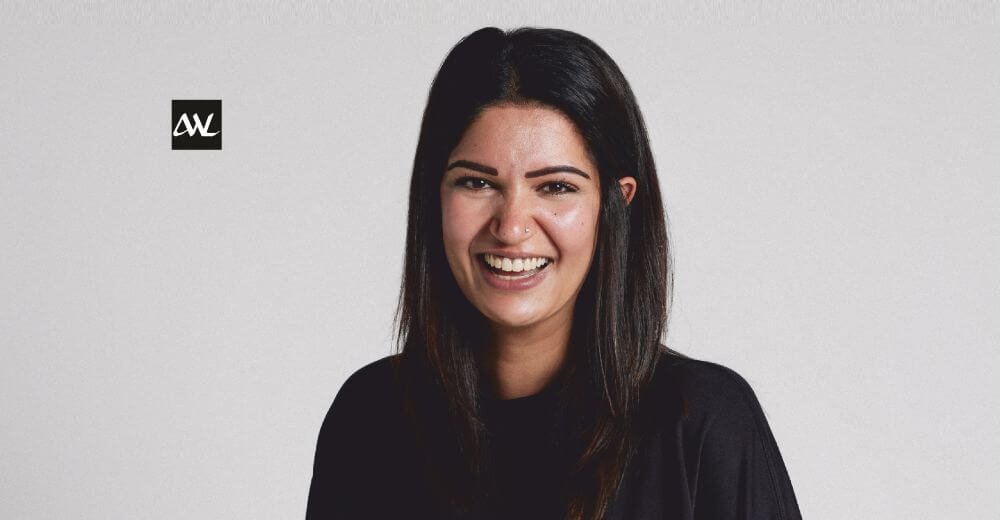HR can no longer be seen as just processes and policies. Behind every employee ID is a human being, with a story, a dream, and a life outside of work.
Sabahatt Habib is the Chief People and Culture Officer of The Giving Movement. She has built her reputation as a transformational leader in human resources and organizational development. Her career began almost by surprise. After completing her master’s, she initially applied for marketing roles, which at the time were seen as the “hot career path.” Like many fresh graduates, she struggled to secure her first opportunity. Out of persistence, she reconnected with a senior leader she had once approached during her thesis. That meeting changed the course of her life. The leader saw potential in her that she hadn’t yet recognized and gave her a first chance in HR. At the time, the field was seen as largely administrative, but she was encouraged to look deeper — to see that HR could be about unlocking potential and shaping culture. What began as an unplanned role soon felt like a door opening to a world she hadn’t even imagined — one that would become not just her career, but her purpose.
Early Career Foundation
When Sabahatt first entered HR, the profession looked very different from today. HR teams were primarily responsible for administrative work: booking flights, processing settlements, approving leave requests, typing letters, and managing filing systems. The role was mostly transactional, focused on keeping the machinery of the business running smoothly behind the scenes.
Even then, she recognized that these processes were not just files or forms. They were connected to real people with genuine stories, struggles, and aspirations. What she didn’t yet know was that HR could extend far beyond administration to actively support people in meaningful ways.
“A mentor encouraged me to broaden my view and helped me to see that HR was never just about paperwork or policies. It could be about people: unlocking growth, shaping organizational culture, and building something greater than transactions.” she says. That realization felt like discovering a door she hadn’t even known existed. It set her on a path that would become not only her profession, but her deeper purpose.
During this early period, HR globally was still widely regarded as an administrative function. The resources, frameworks, and conversations available today did not yet exist. As a young, fresh graduate, Sabahatt considered herself fortunate to discover the people-focused side of HR so early. Once she did, she knew she had found her calling.
Leadership Philosophy and Approach
Her belief is simple: leadership begins with being a good human. For her, that means leading with empathy, kindness, vulnerability, respect, and fairness, and always treating others the way she would want to be treated herself. This philosophy has guided her through the hardest decisions of her career.
This belief system has proven particularly valuable during difficult moments that required tough decisions. “Over the years, I have made many challenging calls that changed the course of someone’s role or future, affecting not only individuals but their families as well. These conversations are never easy, but I learned that even the hardest decisions can and should be made with humanity.” she expressed.
She always chooses honesty and empathy in these situations. This involves listening to people’s fears, acknowledging their contributions, and reminding them that their worth extends far beyond any job title. While the decision itself does not become less painful, the way it is handled can determine whether someone walks away with dignity or with bitterness.
Defining Career Moments
Several defining moments have significantly influenced her leadership journey. One early realization involved recognizing how often HR was perceived as the “rule enforcer” rather than the culture-shaper. She wanted to redefine HR as a space of empowerment rather than restriction.
“While companies need policies because some people will push boundaries without them. I always believed that policies serve as guidelines rather than shackles.” she notes. At the end of the day, every person is an individual human being with unique circumstances and stories. Her approach has always been to look at the person first and ask how the organization can help them. This requires more effort and places greater accountability on her as a leader, with every exception, decision, and veto resting on her shoulders.
Another defining moment occurred when a colleague had a stroke. This colleague came to the office every day, consistently on time. One day, when she did not show up, her line manager went looking for her. They found her in the apartment, having a stroke. This experience reinforced her belief that organizations cannot treat people like employee IDs. They must care for them as human beings, because sometimes that care can literally change or even save lives.
Not all defining moments were dramatic. Some came through challenges such as gossip, negativity, or resistance to change. These experiences taught her that a leader’s role extends beyond putting out fires. Leaders must hold steady, remind people of the bigger purpose, and protect culture even during turbulent times.
“One of my biggest lessons was learning not to take things personally. I realized that not everyone will like me, and that is completely acceptable.” she says. What matters is remaining a good human being and going to bed at night with a clean conscience and a clean heart.
Current Role and Strategic Approach
As Chief People and Culture Officer, she believes purpose cannot just sit in marketing. It has to show up in how people work, how they treat each other, and how decisions are made. At The Giving Movement, the purpose, Humanity in Motion, is brought to life through repetition. The values of Edge, Elevate, and Energy are built into hiring, recognition, and even the language leaders use in meetings.
The company’s values are repeated until they become second nature for team members. These values are built into hiring processes, performance reviews, recognition programs, and the language used in meetings. Every all hands meeting, feedback session, and celebration circles back to these core values. This constant reinforcement helps people realize that these are not just “HR talking points” but represent the actual way the organization operates.
She has found that the most effective strategy for building valued and empowered teams is listening to both what people say and what they do not say. The organization has created multiple spaces where employees can share feedback honestly through surveys, one-on-one meetings, and informal conversations. However, listening alone is insufficient. Acting on feedback is what builds trust. When employees see their input leads to actual change, they feel genuinely valued.
Balancing Growth with Inclusion
She believes growth can sometimes dilute culture, but the key is clarity, being crystal clear about who you are and what you stand for. For her, inclusivity isn’t built by policies alone; it’s built in real moments, when managers listen deeply or adapt processes to meet individual needs. That’s how belonging becomes real.
For Sabahatt, inclusivity involves ensuring no one feels left behind as the organization scales. Belonging is not built by policies alone but develops through how people are treated in real moments.
The company achieves inclusive belonging through comprehensive awareness training that helps team members understand different perspectives and experiences. They create policies that reflect fairness and inclusion while setting up robust support systems for employees of determination. They make giving back a unifying factor, as working together on purpose-driven initiatives helps differences melt away and allows a shared sense of humanity to emerge. This approach keeps inclusivity alive, not as a checklist item but as a lived experience for all team members.
The Role of Empathy and Strategic Alignment
Sabahatt views empathy as the foundation of high performance. When people feel understood and supported as human beings, they naturally push themselves further. Today’s employees want flexibility, respect for personal time, and genuine concern for their well-being. Empathy helps leaders navigate this shift by creating environments where people feel safe enough to give their best effort.
She believes that people’s strategy is a business strategy. She aligns HR initiatives by ensuring every program ties directly to company objectives. When the business sets goals for expansion or innovation, Sabahatt’s team determines what training, support, or engagement is required. Simultaneously, employee well-being remains non-negotiable, with policies designed to help people show up as their best selves.
Future Vision and Leadership Advice
She anticipates three big shifts ahead: from job skills to AI skills, where anyone can do anything if they know how to use AI well; from smart work to effortless work, cutting complexity and making work lighter; and from employees to humans, recognizing that people are not headcount but individuals with lives, families, and dreams.
For aspiring HR and culture leaders she advises, “Be humble, be curious and kind, and never forget that HR focuses on humans first. Leaders should challenge the status quo and always ask whether they are making their workplace kinder, fairer, and more human each day.”
Personal Inspiration and Legacy
What keeps Sabahatt motivated is the belief that through HR roles, professionals can positively impact human lives and make the world a better place. This sense of purpose drives her every single day and shapes every decision she makes as a leader.
She draws strength from her family, her mom, whose resilience has shown her how to face challenges with courage and grace; her husband, who often has more confidence in her than she does in herself, pushing her to dream bigger; and her sister, who has been her anchor since the day she was born, guiding her through every step of life and her dad who is always watching over her.
Together, they are her foundation. Beyond them, what inspires her most are people themselves, their stories, their resilience, and the spark in their eyes when they realize their potential. And nowhere does she see this more than in her team, with their passion, dedication, and the way they show up for each other.
For her, HR has never been just a department or a set of functions. It represents the place where lives are shaped, where potential is unlocked, and where people discover what they are truly capable of achieving. She has had the privilege of building a culture that goes beyond policies or systems, focusing instead on creating an environment where people feel seen in their struggles, celebrated in their successes, and supported as human beings every step of the way.
When she thinks about her legacy, her vision is beautifully simple: she wants people to say they felt genuinely cared for, treated with consistent kindness and fairness, and that their time in the organization helped them grow not only as professionals but as complete human beings. Leadership, at its core, is not about power, authority, or titles. It represents humanity in action, the kind that stays with people long after they have left the building and continues to influence how they treat others throughout their lives.
Read Also : Aisling Oslizlok: Redefining Pediatric Nutrition in a Multicultural World




